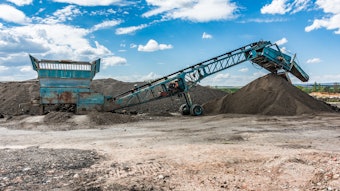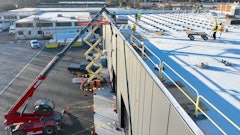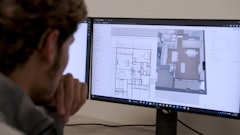The International Green Construction Code (IgCC), approved last week after two years of development, applies to all new and renovated commercial buildings and residential buildings over three stories high.
The historic code sets mandatory baseline standards for all aspects of building design and construction, including energy and water efficiency, site impacts, building waste, and materials.
Although the final code won't be published until March 2012, many local and state governments have begun to officially adopt it.
"It represents a change in the standard of construction," says Jessyca Henderson Director of Sustainability Advocacy at the American Institute of Architects. "It will effect everyone that touches buildings...it will be a big leap."
How it Differs From LEED
The new code creates a mandatory "floor" - enforceable minimum standards on every aspect of building design and construction that now must be reached.
LEED certification, on the other hand, is voluntary. Although many buildings now strive for it, there are more that don't. The new code will thus raise the standards for ALL buildings.
Also to qualify for LEED, designers choose from a menu of options. They may choose to address certain aspects of energy efficiency, such as lighting, for example, while leaving others out.
Setting a "floor" through the code, creates the opportunity for LEED-certifications to push toward higher "ceilings," where buildings are awarded for truly reaching greater levels of performance, rather than receiving awards for what are increasingly expected standards.
Mandatory Requirements:
Site Development, Land Use: it pretty much eliminates development on greenfields (undeveloped land), although there are exceptions based on existing infrastructure. It includes clear guidelines for site disturbance, irrigation, erosion control, transportation, heat island mitigation, graywater systems, habitat protection, and site restoration.
Materials: A minimum of 50% of construction waste must be diverted from landfills, and at least 55% of building materials must be salvaged, recycled-content, recyclable, biobased, or indigenous. Buildings must be designed for at least 60 years of life, and must have a service plan that justifies that.
Energy Efficiency: total efficiency must be "51% of the energy allowable in the 2000 International Energy Conservation Code" (IECC), and building envelope performance must exceed that by 10%. It sets minimum standards for lighting and mechanical systems, and requires certain levels of submetering and demand-response automation.
Water Efficiency: it establishes maximum consumption of fixtures and appliances and sets standards for rainwater storage and graywater systems.
Indoor Air Quality: It addresses radon, asbestos, VOCs, sound transmission, and daylighting.
Commissioning, Operations: it requires extensive pre- and post-occupancy commissioning and education of building owners and maintenance employees.
Every project is also required to choose an additional "elective," which pushes the envelope for the developer further. Once they choose it, it's enforceable. There's a long menu of elective choices, including whole-building life-cycle assessment to more stringent recycled-content.
Local governments and states have the choice of adopting the code, but once they do, it's enforceable. They can add their own requirements on top of the code that address local concerns such as stormwater management or lighting pollution control.
To help implement the code, IgCC includes a "cookbook" approach for smaller buildings to follow and a more flexible approach for large buildings.
To develop the code, the International Code Council worked with many stakeholders, with the American Institute of Architects, US Green Building Council, and the American Society of Heating, Refrigeration and Air Conditioning Engineers (ASHRAE), foremost among them.

![Img 1707[56]](https://img.forconstructionpros.com/files/base/acbm/fcp/image/2023/04/IMG_1707_56_.6437076c97961.png?auto=format%2Ccompress&fit=crop&h=191&q=70&rect=0%2C462%2C1920%2C1080&w=340)











![Glp Porsche 072723 465 64ee42287c29e[1]](https://img.forconstructionpros.com/files/base/acbm/fcp/image/2024/03/GLP_PORSCHE_072723_465.64ee42287c29e_1_.65e88b8589b9c.png?auto=format%2Ccompress&fit=crop&h=135&q=70&rect=0%2C520%2C2250%2C1266&w=240)












